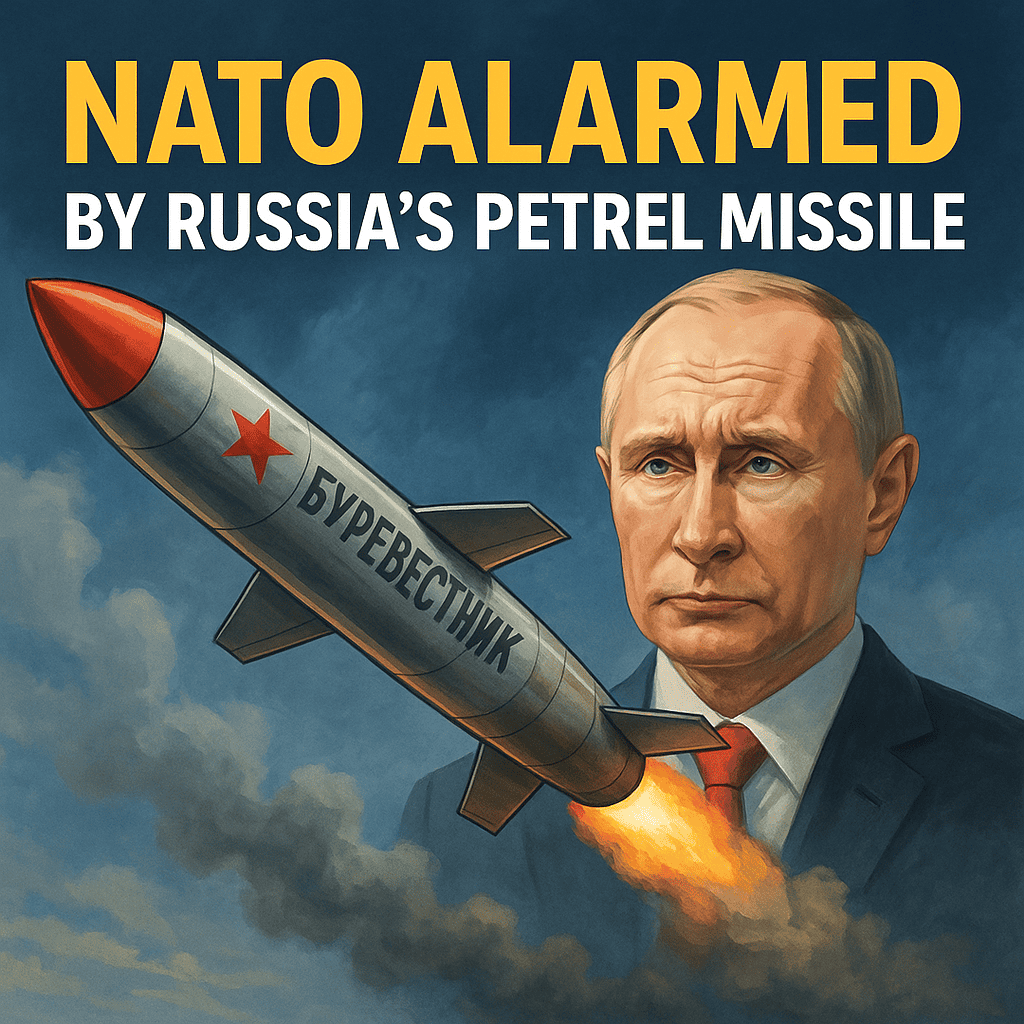NATO Alarmed by Russia’s Burevestnik Missile as Nuclear-Powered System

NATO officials are increasingly alarmed by intelligence indicating that Russia’s nuclear-powered Burevestnik missile, known to the alliance as the SSC-X-9 Skyfall, may now be ready for operational use. The latest internal assessment, cited by Euronews, warns that the missile’s combination of extreme range, unconventional propulsion, and unpredictable flight paths represents a significant complication for Western air-defence planning.
The document outlines how the Burevestnik’s miniature nuclear reactor is designed to keep the missile airborne for extraordinarily long periods, enabling it to approach targets from non-standard directions, including Arctic and trans-polar routes where radar coverage is weaker. This capacity to remain in flight for extended durations and to manoeuvre repeatedly mid-course is central to NATO’s concern.
While the Burevestnik is not classified as hypersonic, NATO analysts noted that its ability to alter direction multiple times during flight could overwhelm conventional tracking systems. The report also describes speeds above 900 km/h and a launch profile compatible with mobile platforms, adding further uncertainty to detection timelines. The alliance acknowledged vulnerabilities inherent to such a missile — particularly during long-endurance flights — but warned that its operational concept is specifically designed to exploit gaps in the alliance’s defensive architecture.
The concerns extend beyond a single weapons system. NATO’s assessment also tracks Russia’s SS-X-28 Oreshnik, reportedly tested in Ukraine in late 2024 and believed to have a range of up to 5,500 kilometres with variable warhead options, including nuclear. Belarus is expected to host deployments of this missile starting in December. Meanwhile, Russia’s Poseidon nuclear-capable underwater drone, targeted at strategic ports and coastal cities, is projected to enter service later in the decade.
Behind the immediate alarm lies a broader strategic interpretation: Russia appears to be committed to developing systems that circumvent or neutralize the effectiveness of existing NATO missile defenses. Several defence analysts cited in the report argue that Moscow’s pursuit of exotic, reactor-driven or underwater nuclear systems is designed to complicate deterrence calculations for the West. Others stress the inherent operational risks, noting that earlier Burevestnik tests resulted in fatal accidents and measurable radiation spikes.
For NATO planners, the assessment highlights a long-term challenge: the gradual maturation of Russian capabilities, which are explicitly aimed at exploiting gaps in surveillance, early warning, and interception technologies.


















































